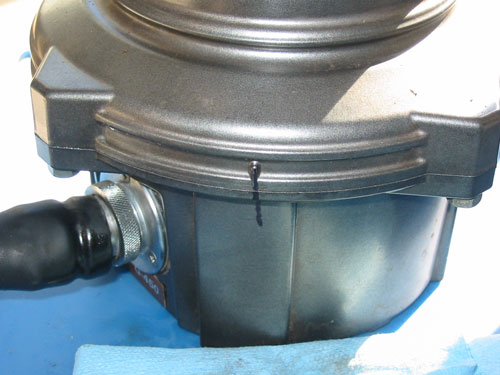HG-10b VFO for the HW-16
HG-10b VFO for the HW-16
The HW-16 was now operating reasonably well under crystal control. Next, I turned my attention to the HG-10b VFO.
I removed the covers, and discovered that there were no paper caps or electrolytic can caps used. Because the VFO has no ventilation holes, the inside was as clean as the day it was buttoned up. All solder joints looked to be good, and I saw no reason to think that it might not work. I checked the wiring of the cable to make sure it was wired for Grid Block keying, as required by the HW-16. Then I buttoned it back up and plugged it into the HW-16.
I turned them on and brought them up with the variac, to make sure the VFO didn’t have any faults that would harm the HW-16. Because it derived it’s operating voltages from the HW-16, there was the chance that something could go wrong and do damage to the transceiver. But all was good.
While letting the VFO and HW-16 warm up, I constructed some cables for the setup. An audio cable with an RCA jack on one end, and a 3.5mm mono plug on the other end. This was to allow me to plug the HW-16 into my NESCAF Audio filter. Next was a coax with an RCA plug on both ends, for the VFO output to the HW-16. Finally, a coax with an RCA plug in one end and a PL-259 plug on the other to allow easy connection to my antenna system.
To make decent connections to the old RCA connectors that I found in my hardware bins (I think they were the original ones I got with my HW-16 in 1975), I followed this procedure. I can’t guarantee that this is the “correct” way to do it, but it makes a neat, solid connection.
First, I slipped a piece of heat-shrink tubing over the coax.
Then I stripped back the outer insulation to expose the braid of the coax.
Next, I wrapped the braid with solid wire down near the outer jacket.
Then, I splayed out the rest of the braid to make it easy to cut.
Then I cut off the excess braid and soldered the solid wire to the braid, being careful to not allow the center conductor insulation to melt.
Finally, I cut back the center conductor insulation about 1/8″ above the shield, and inserted the center conductor into the pin of the plug. I then soldered the center pin and wrapped the solid wired attached to the braid around the end of the shell of the connector, and soldered these. After slipping the heat shrink up over the connections, it was ready to go.
After all of that, I hooked everything up and moved the HG-10b Function switch to SPOT. Tuning the VFO around, I was able to easily find the VFO output on all three bands. Man, the SPOT signal is very strong! Watch your ears.
Finally, I transmitted into a dummy load and tuned up on each band with the VFO in place, instead of a crystal. All three bands had good output, matching the output that I was getting with crystal control.
Time to button this thing up. I went to ACE Hardware, and found some replacement feet that look pretty good. Not an exact match, but they look ok and serve their function.
Time to get a decent low band antenna up for the Novice Rig Roundup!














Comments
Post a Comment